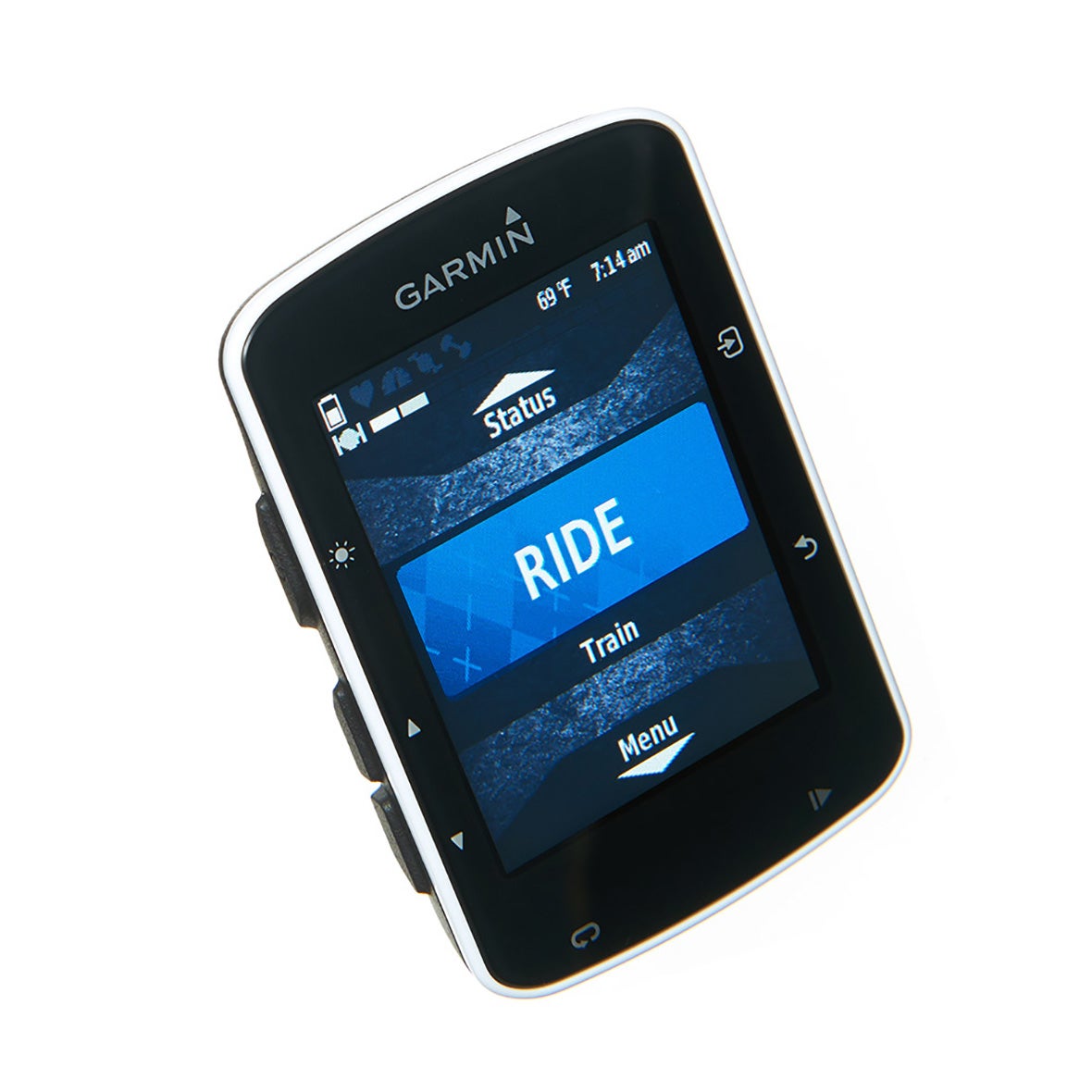2016 Triathlete Buyer's Guide: Bike Computers And Power Meters

Photo: Scott Draper
$300, Garmin.com
The draw: Compact, do-it-all computer
*Best In Class*
There isn’t a more full-featured cycling computer in a package smaller than the Edge 520. It has quickly become the favored bike computer of pros and age-groupers alike, and for good reason. It adds in mapping, the ability to control your ANT+ trainer and integration with Strava to get live segment standing updates against both your friends and KOM’s. The unit also connects to bike lights and bike radar systems, giving you more visibility control than ever before.
$170, Polar.com
The draw: Feature-packed, half the price
*Best Value*
Polar M450 may seem like a budget item, but in reality it has many of the same features as units double its price. The GPS-enabled bike computer can connect to Bluetooth Smart sensors such as power meters, cadence/speed sensors and heart rate straps. It includes a barometric altimeter and the ability to get back-to-start guidance—both of which are rare at this price point. Afterward, it’ll sync to Strava via Polar Flow.
$80, Wahoofitness.com
The draw: Ideal commuter computer
The Wahoo RFLKT is a smartphone-enabled computer. That means that as long as your phone is within range, you’ve got a full-featured bike computer that uses your phone’s GPS. It can also connect to Bluetooth Smart sensors (like cadence and power), or for $20 more you can get the RFLKT+ (pictured), which connects to ANT+ sensors. This past fall, the Wahoo RFLKT got a major upgrade that added in smartphone call and text notifications.
$400, 4iiii.com
The draw: Power at an affordable price
The 4iiii Precision is the least expensive direct-force power meter on the market today and yet measures power just as accurately as any other. The Precision is similar to Stages in that it measures your left-leg power, so that may vary from rider to rider. With 4iiii, you can send in your existing crank arm to get it upgraded, and the company has plans to offer a dual-left/right upgrade option later this year.
$1,200, Powertap.com
The draw: Simple to swap between bikes
If you’re looking for the ability to move your power meter between bikes in a couple minutes with just a hex wrench, the P1 is your answer. This pedal-based power meter measures both legs independently, and then transmits your wattage over ANT+ and Bluetooth Smart. That makes it compatible with your Garmin, Polar and favorite cycling apps—all while being just as accurate as any unit on the market. An update planned for later this spring will bring advanced pedaling efficiency metrics as well.
$629, Power2max.com
The draw: Accurate and reliable power
Power2Max continues to expand crank compatibility within its Type S power meter, which accurately captures your total power from both legs. The Type S transmits power and cadence over ANT+, so it’s best if you’re using a Garmin watch or bike computer—but it works equally well with ANT+-supporting trainer apps like Zwift or TrainerRoad. You can select to either purchase just the power meter or buy the crank arms with it.